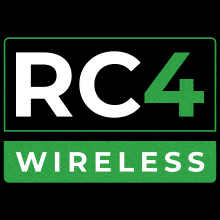==Overview==
Gobos, also know as templates, patterns, and less often, cookies are a media used for projecting images from focusable lighting instruments.
From https://www.controlbooth.com/threads/myths-vs-reality.46050/#post-403482 :
Gobos come in standard sizes that fit most lighting instruments. Sizes are designated by letter, with the most common being A, B, and M. Careful attention must be paid to both outer diameter and image area.
==Steel Gobos==
The most common type of gobo is made from thin steel into which a pattern is cut. This yields a black and white image, though some manufacturers offer some gobos with halftoning. The steel gobo is then placed in a holder that fits the fixture it is to be used in. The gobo is centered at the gate of the instrument and then can be focused on the surface being projected on.
==Glass Gobos==
Glass gobos are patterns that are imaged onto pieces of glass, or glass that is textured and coated to produce visual effects. Use of glass gobos allows projected images to be done in color and make full use of multi-tonal images. Glass gobos are generally produced with a dichroic coating to produce the colors. Manufacturers offer a range of stock glass gobos and also offer custom imaging.
As mentioned previously, some glass gobos feature textures or crushed dichroic coated pieces to "colorize" the light or give it a colored texture.
==Custom Gobos==
If budget or time is limited, one can make one's own gobos, using a variety of methods, with varying results. See the Collaborative Article: http://www.controlbooth.com/forums/collaborative-articles/13656-diy-gobos.html.
For help in choosing a gobo, Gobo Visualizer is an online tool that allows one to choose a gobo, rotate it, stack two, color, and blur the edge. Moiré Gobo Library is a similar app for the iPhone.
Gobos, also know as templates, patterns, and less often, cookies are a media used for projecting images from focusable lighting instruments.
From https://www.controlbooth.com/threads/myths-vs-reality.46050/#post-403482 :
All of the major lighting consumables manufacturers like Apollo, Gam (Founder Joe Tawil is credited with being the first to offer a line of stock gobos for purchase, about 1975.), Rosco, and Lee carry a wide variety of gobos and provide services for making custom gobos with the consumers' artwork. Goboman is a relative newcomer to the field. There's even a "Rent-a-Gobo" company, InLight Gobos, primarily for moving light gobos which can be quite expensive.
Gobos come in standard sizes that fit most lighting instruments. Sizes are designated by letter, with the most common being A, B, and M. Careful attention must be paid to both outer diameter and image area.
==Steel Gobos==
The most common type of gobo is made from thin steel into which a pattern is cut. This yields a black and white image, though some manufacturers offer some gobos with halftoning. The steel gobo is then placed in a holder that fits the fixture it is to be used in. The gobo is centered at the gate of the instrument and then can be focused on the surface being projected on.
==Glass Gobos==
Glass gobos are patterns that are imaged onto pieces of glass, or glass that is textured and coated to produce visual effects. Use of glass gobos allows projected images to be done in color and make full use of multi-tonal images. Glass gobos are generally produced with a dichroic coating to produce the colors. Manufacturers offer a range of stock glass gobos and also offer custom imaging.
As mentioned previously, some glass gobos feature textures or crushed dichroic coated pieces to "colorize" the light or give it a colored texture.
==Custom Gobos==
If budget or time is limited, one can make one's own gobos, using a variety of methods, with varying results. See the Collaborative Article: http://www.controlbooth.com/forums/collaborative-articles/13656-diy-gobos.html.
For help in choosing a gobo, Gobo Visualizer is an online tool that allows one to choose a gobo, rotate it, stack two, color, and blur the edge. Moiré Gobo Library is a similar app for the iPhone.
This page has been seen 7,249 times.
-
-
Created by onLast updated by on
-







